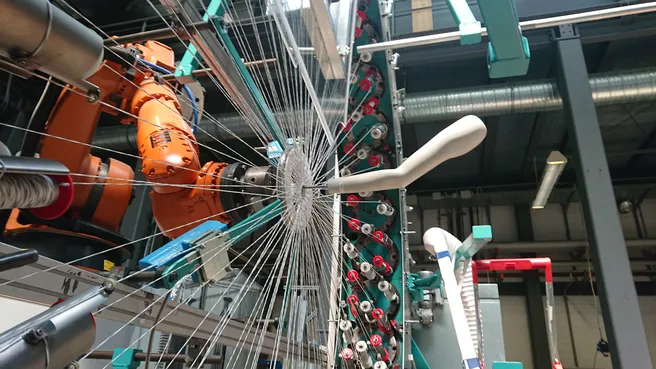Within the framework of a student project of the University of Art and Design Linz, tests for overbraiding of mannequin extremeties have been carried out at the Chair of Carbon Composites. The background of the work was to find new manufacturing techniques for everyday clothes with a high degree of automation and productivity. This way, it shall in the future be possible to produce more clothes close to the customers in the developed world and thus avoid climate-damaging transport routes. To assess the braidability of classical textile yarns, arms and legs of a mannequin with varying joint positions were overbraided using a KUKA handling robot. Due to the higher coefficient of friction of the textile yarns, yarn tension anomalies quicker led to the formation of optical disturbances of the braid (e.g. loops or gaps) than when braiding reinforcement yarns such as carbon or glass. By means of a suitable machine setting, disturbances of the finished braid could however be avoided and the braiding machine could run at maximum speed and thus maximum productivity. Finally, loose sleeves were braided and handed over to our partners from Linz so that they can further process them, e.g. in an assembly step for a wearable sweater.
